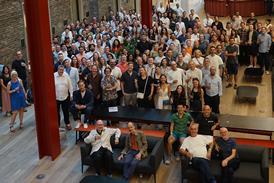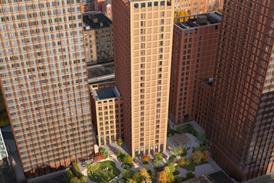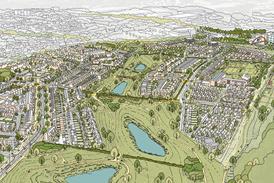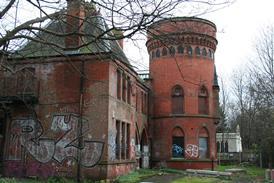The most successful places are messy ecosystems that have evolved over time. Brand new developments will only begin to mimic them when the landowners let go, says Martyn Evans

Last week I spoke at an event during the launch weekend of the London Festival of Architecture. It was organised by Pidgin Perfect, an interesting collective of placemakers based in Glasgow.
They’ve built an installation in the middle of Get Living’s East Village PRS development just beside the Olympic Park in London and are using it to hold a series of events throughout June that will “explore how subtle changes made to space, daily routine and approaches to community engagement can lead to wider long-term shifts in the identity of a place”.
East Village was built as the athletes’ village for the 2012 Olympics. When the games finished, Get Living and Triathlon Homes took over the scheme and created a virtual new town in E20.
More than 2,800 homes there (with 2,000 more to come) are split half and half between the two organisations. Get Living occupy theirs as a PRS scheme; Triathlon through shared-ownership and social rent.
I sat in the sunny piazza watching the people go by, listening to the representative from Get Living talk about the hard work she does to build a sense of community with the residents and the commercial tenants there. She sounded like she really cared but I couldn’t help wondering how much impact it was really going to make.
Really good communities take a long time to develop. And when they’ve reached maximum-place-make, like successful town centres or one of London’s villages, they are complex structures, not owned by any one organisation but messy, inter-connected ecologies of people, businesses and government. There are churches, schools, shops, community centres, private houses, public houses, parks and factories, all owned and operated independently. When you think how long it has taken for a diverse, complex place like Islington in London to become established and successful, it seems crazy that we think we can do it from a top-down, developer-controlled process rather than in an un-planned bottom-up organic way.
East Village is only one small part of the wider development around the Olympic Park where thousands of new homes are being built in vast swathes of modern apartment blocks. Each scheme is owned by a developer or housing association and, even if the individual units are sold off, an investor will buy the rights to ground rents and run the management company that looks after the development, funded by the residents’ service charges.
The language around these places is all about what is and isn’t allowed and what the developer is organising to help encourage a sense of community. What we are creating now are 21st-century versions of landed estates, where the aristocrat lord of the manor owned everything, controlled how his tenants lived, built pubs and community halls for them and set the rules for how life was to be played out – in Saltaire near Bradford, mill-owner Titus Salt even set down rules about which streets were allowed to hang out washing on which days.
How different would it be if the developers didn’t imagine it was their job to create the community once they had designed the place, but rather invested somehow in independent, uncontrolled, self- motivated community members and let them loose to develop as they might?
After the event was over, I talked to a couple – Matt and Bethany – who’d stopped with their six-month-old baby to listen to the debate. They had recently moved to an Edwardian house in a terraced street nearby in Leyton and Bethany was still on her maternity leave. As usual with new mums, she’d built a group of friends locally through her ante-natal classes and in the park. They communicate through a WhatsApp group. They don’t need a series of residents’ evenings, organised by the company that owns the development they live in – there isn’t one. They just need their WhatsApp group as the tool for coming together either to have fun or to organise community action.
So, what role for architects in this debate? I’ll offer my usual refrain: architects know about life. Creative people, with creative minds who have the ear of their developer clients. Architects know how to tell stories. Instead of holding your next presentation in your meeting room or at the client’s office, book the local pub and explain why: it’s about being part of a community.
















No comments yet